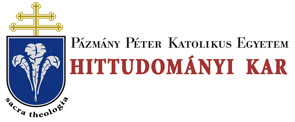Folia Theologica et Canonica 6. 28/20 (2017)
IUS CANONICUM - José Miguel Viejo-Ximénez, Raymond of Penyafort decretalist
128 JOSÉ MIGUEL VIEJO-XIMÉNEZ to his chaplain, whose answer is a concise and clear casuistic guide on how to interpret and apply the banning of trade with pagans, usury and slavery passed by the last two general councils («in utroque Concilio prohibita»), i.e. canons 24. 25 and 26 of the Third Lateran Council (1179) and constitutions 67 and 71 of the Fourth Lateran Council (1215)39 40 41. Not long after the dissemination of Rex Pacifiais to the doctors and students of the Universities of Bologna and Paris (September 5, 1234), Raymond revisited his SdC. The work would have begun in Rome and finished in Barcelona (1235-1236). First he updated the handbook with the new legislation and adapted the legal references to the Liber Extra. The making of a new collection of sixty-two decretals of Gregory IX, known as the Constitutiones novae, at the request of the members of his order could also be linked with this aspect of the revision4". But the main concern of the papal chaplain was to complete the SdC with a fourth participa on marriage law. Indeed, the first recension of the SdC in three particulae had not considered this subject. Copyists fulfilled the omission with Tancred’s Summa de sponsa- libus et matrimonio, added as a supplement to Raymond's SdC. Tancred (f c. 1236) wrote his Summa between 1211 and 1213 and updated it after the Fourth Lateran Council ( 1215)4‘. When preparing the new version of the SdC, Raymond borrowed long paragraphs from the Summa of his colleague, adapted them to the new legislation, and wrote new pieces on the subject. The final result was a Summa de matrimonio (SdM) that copyists and editors presented as the fourth book (quarta participa) of the SdC42. Raymond’s explanations of the canonical discipline are organised into three parts: «primo, de sponsalibus et matrimonio; secundo, de quindecim impedimentis matrimonii; tertio, qualiter ad matrimonium coniungendum vel disiungendum agatur» (SdM, proemium). These main subjects are completed with short reflections on legitimate children, dowries and donations between spouses. The method is similar to that used for the writing of the SdC: «ponendo rubricas in locis debitis, et dubitationes diver- sas ad rubricas singulas pertinentes» (SdM, proemium). The rubrics of SdM are 25: (i) De sponsalibus; (ii) De matrimonio', (iii) De errore personae', (iv) De impedimento condirionis; (v) De voto', (vi) De cognatione carnali', (vii) De cog39 Cf. Rius Serra, J., Diplomatario, num. XVII. On the conciliar legislation, cf. Duggan, A., Conciliar Law 1123-1215: The Legislation of the Four Lateran Councils, in Hartmann, W. - Pennington, K. (ed.), The History of Medieval Canon Law in the Classical Period, 318-366. 40 Edition of the incipits: Ochoa, X. - DIez, A. (ed.), Summa de matrimonio, 1007-1018. 41 Edition of the Summa de sponsalibus: Wunderlich, A. (ed.), Tancredi summa de matrimonio, Göttingen 1841. Cf. Valls i Taberner, F., Intorno alla «Summa de sponsalibus et matrimonio» del maestro Tancredo da Bologna, in Rivista di storia del diritto italiano 11 (1938) 367-382. Viejo-Ximénez, J. M., Tancredo, in Otaduy, J. - Viana, A. - Sedano, J. (dir.), Diccionario General de Derecho Canònico, VII. 535-537. 42 Edition: Ochoa, X. - Díez, A. (ed.), Summa de matrimonio, 901-98; nontheless, cf. García y García, A., ;No es estol, 187-196. García y García, A., La canonistica, 44, footnote 16.
